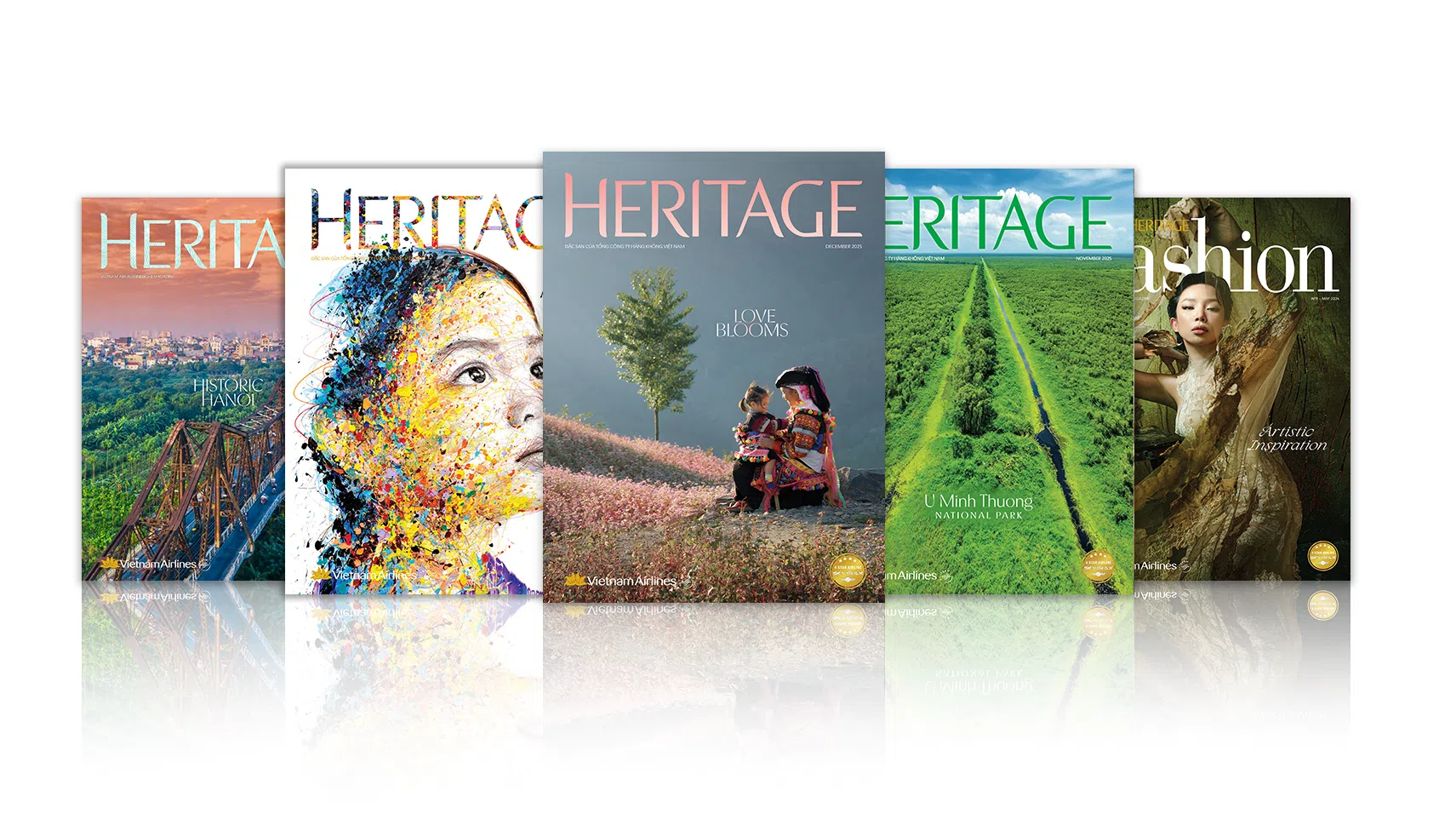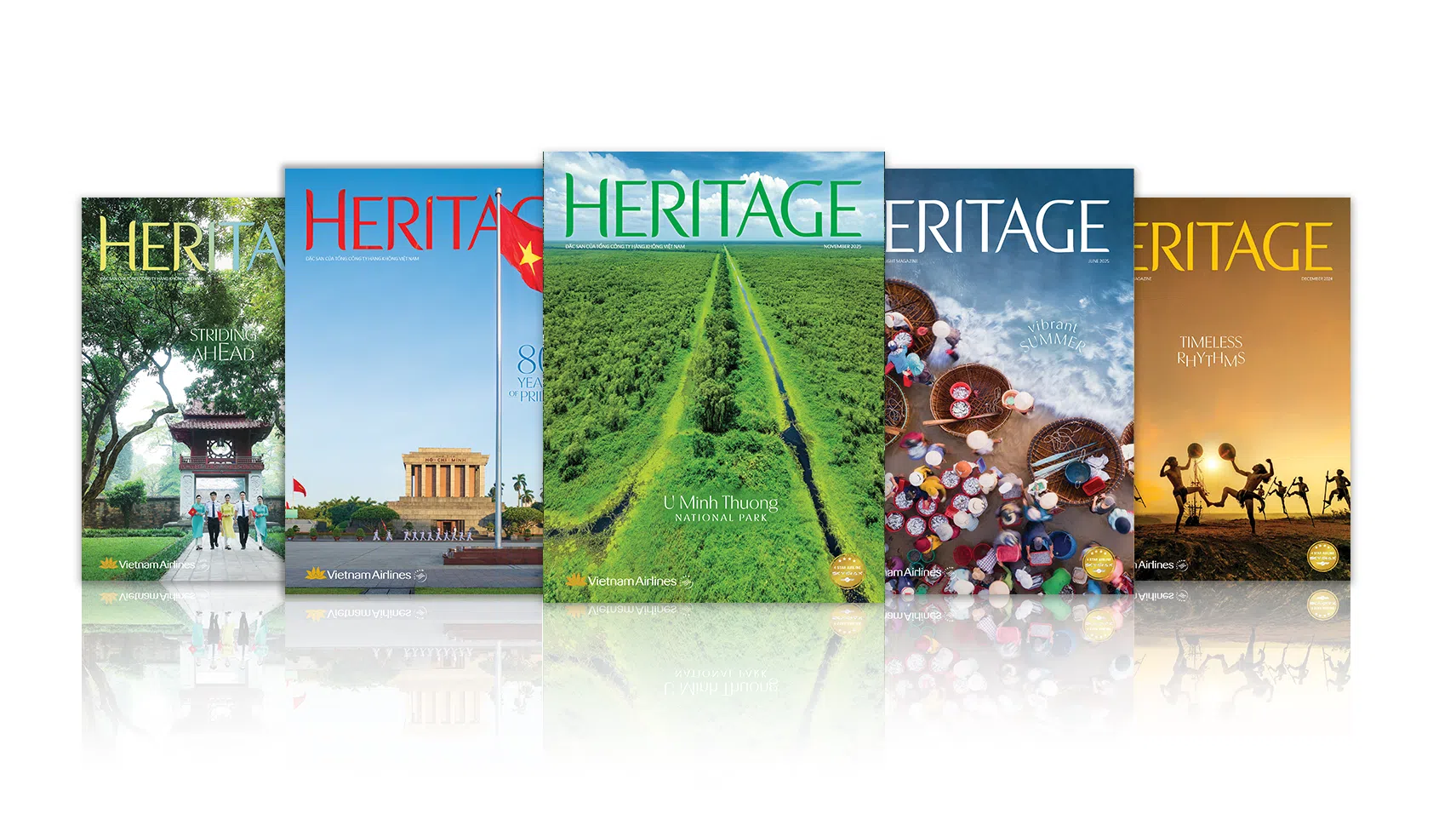Story NAM THI
Photos INTERVIEWEES
Technology and the digital world are exerting a powerful influence on fashion and art. This month, Heritage Fashion talks to creative pioneers using new tools to chart a path to the future.
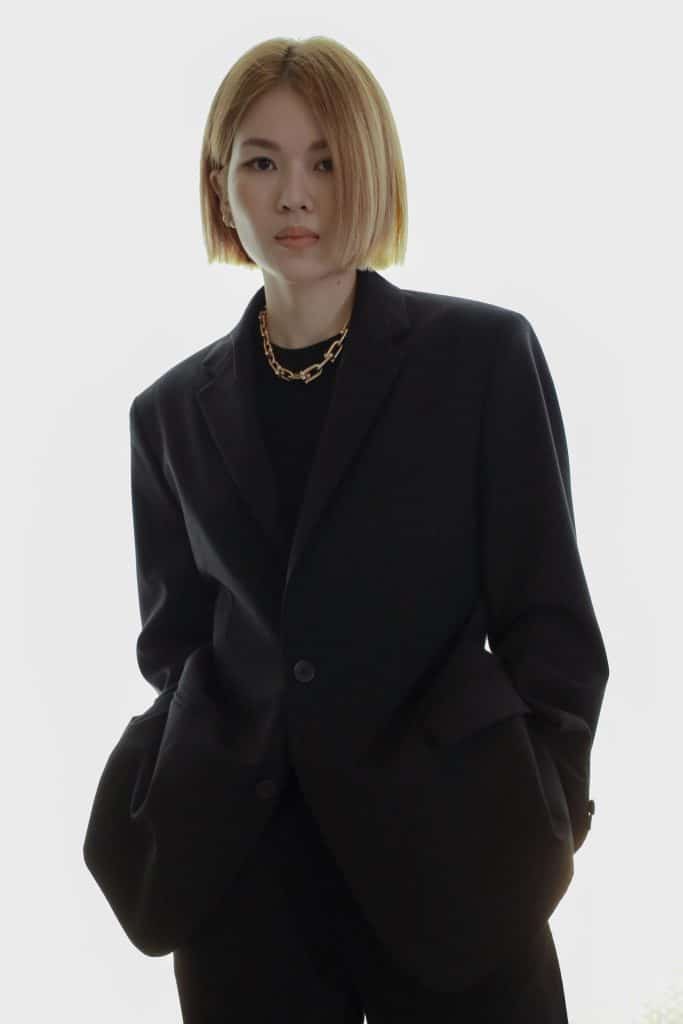
Fashion Designer Xno Bui
Hello, Ms. Xno Bui. What led you to the world of the Metaverse in the field of digital fashion?
14 years ago, when I started my entrepreneurial journey, I wanted to create products that truly improve lives and society. When I encountered the blockchain, I realized this is the future technology that is essential in developing Web3 and the Metaverse. I decided to pursue it, aiming for a future where digital identity is no longer bound by giants like Facebook or Google. Deep down, my roots are in design, motivating me to invest time in research and study, all with the intention of applying this new technology to design and fashion. For me, ORTHO is not an effort to keep up with a passing trend. I believe digital fashion will also change how we perceive and experience clothing: with a touch, we can change clothes anytime, anywhere.
What you are doing is quite new in Vietnam. Can it be considered pioneering?
What I’m doing can be considered pioneering in Vietnam and even globally, as the digital fashion industry still contains very few companies. Currently, I’m not focusing on ORTHO’s market in Vietnam. But Vietnam has a special meaning for me – I’m concentrating more on inspiring and guiding young Vietnamese than seeking profit.
Vietnam has a talented force of young artists and creators. I believe the creative potential of young Vietnamese is a valuable resource. I want to create motivation and opportunities for them to access new technologies like Web3 and the Metaverse, opening up many new creative fields and careers.
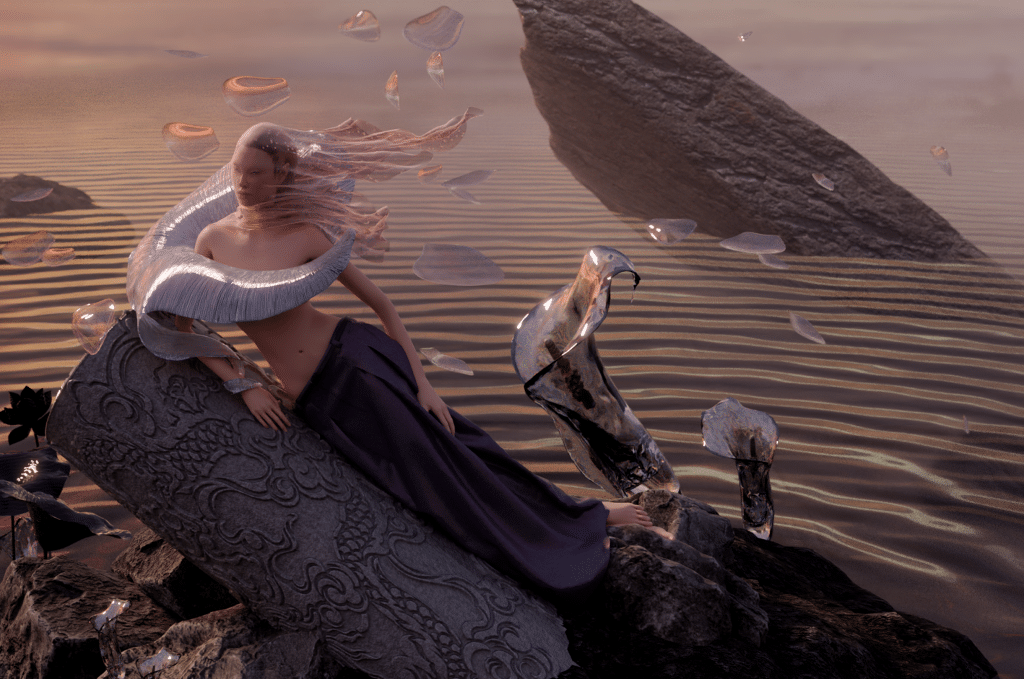
What is its mission of digital fashion and the ORTHO brand?
ORTHO’s mission is to redefine how we experience fashion. Just as music has gone through digital revolutions from tapes to online streaming, I believe that everyone will have their own digital wardrobe in their pocket. We won’t need to carry too many clothes for a trip but will still be able to express ourselves on social media. Moreover, we are establishing a new platform for owning digital fashion, changing how you perceive and interact with fashion, and creating a new economy for buying, selling, and exchanging digital clothing through digital ownership.
So, when founding ORTHO and deciding to venture into digital fashion, how did you and your team ensure its stable development?
We believe in technology and social development. If a product is created well and helps improve life, it will exist. We have laid the foundation for a digital fashion brand by focusing on what truly has value, creating products that are not only beautiful but also sustainable, helping people easily express themselves in the exciting digital world. I’m not chasing trends; I’m pursuing the future.
Are you ever concerned that people will become disconnected from real-life interactions as the virtual world develops?
I believe that technology, especially Web3 and the Metaverse, is not a replacement for the real world but an extension of it. If we use technology to create meaningful interactions, build communities, and support each other, then the virtual world can complement real life. My perspective on technology has always focused on how we use technology to make life better. Technology can create significant changes in society. Instead of worrying about what we might lose, let’s focus on the opportunities that technology brings. Most importantly, for me, technology is a tool, and humans are the masters of it.
Thank you for sharing your insights. We wish you continued success!
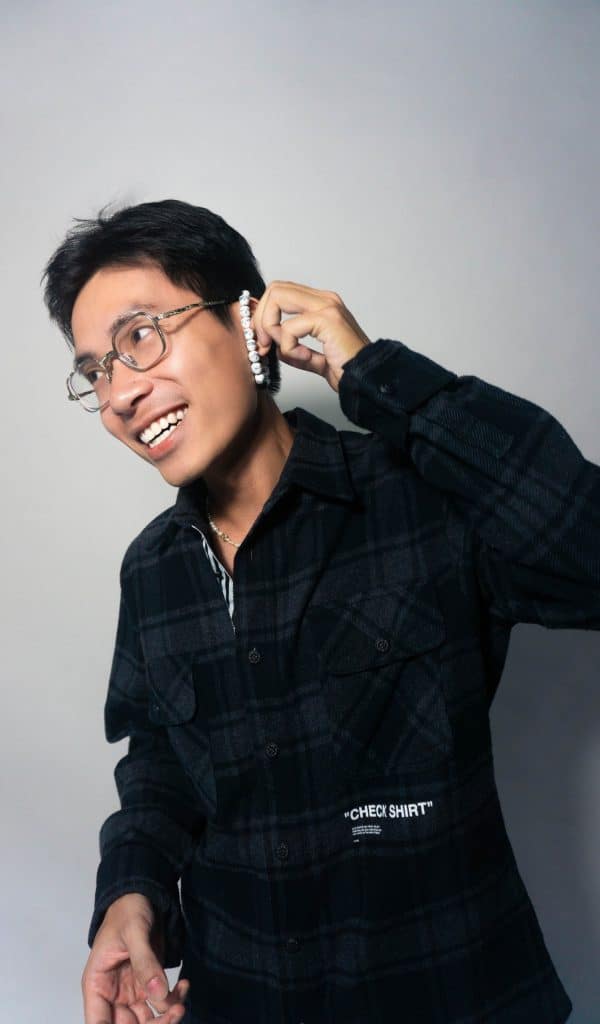
Creative Director Cao Hoang Long
Hello, Creative Director (CD) Cao Hoang Long. To start, could you share a little about yourself and your journey to becoming a visual artist?
Hello Heritage Fashion. I am Cao Hoang Long, an independent CD/Visual Artist and the founder of creative studio CABE. I was born in Da Nang, grew up in Hanoi and am currently developing my career in Saigon. Moving to many places and being exposed to different regions’ cultural elements inspired me to create works based on traditional elements and breathe new life into them using modern techniques.
You often apply digital technology to your creative products. Could you share more about this aspect of your process?
Digital technology is a tool that can realize feelings, ideas, and spaces in a surreal way. My team and I at CABE can create unimaginable stopping points for the audience when they step into the world we create. Using digital technology is also the key to opening up new living inspirations for the viewer, where futuristic, contemporary spaces evoke ideas for the audience when they face the artwork.
What is the central theme you focus on? And what inspires you to create art?
The central theme I’m pursuing is using folk tales and breathing contemporary life into them while also bringing artistic experiences closer to the public, specifically experiences like video art and performance art. My artistic inspiration often comes from things close to life. Reimagining what already exists in life is a meaningful practice because I always see new lives in what seems familiar. For me, if I don’t continue writing or interacting with those traditional materials, it would be a waste. I have a work called 100 in Hue inspired by the [Vietnamese founding] legend of 100 eggs. Here, the 100 children not only go up to the mountains and down to the sea but also up to the universe and cyberspace.
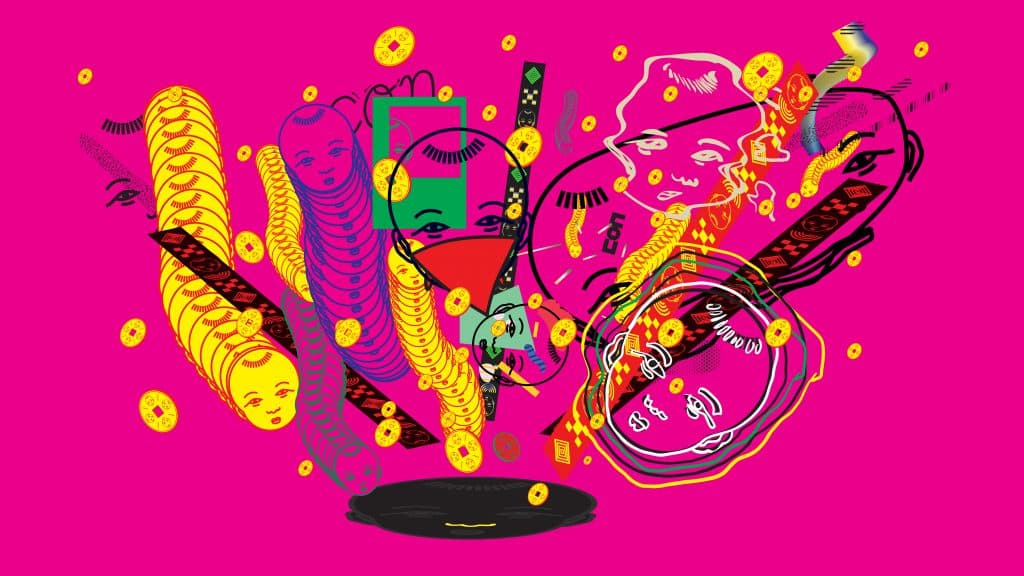
In fashion, how do you create spaces for designs to express their stories?
I really enjoy conveying concepts and stories into fashion projects. For Inflowing with Cuong Dam, we created a successful show using the image of rice grains and the wet-rice civilization for this campaign. And in Metamorphosis with designer Nguyen Hoang Tu, natural silk material and surreal formations combined to create unimaginable experiences for the audience. The material, form and depth of fashion are often difficult elements for designers to fully express because they have devoted all their energy to the collection. My role is to highlight those ideas with symbolic spatial images.
How do you evaluate the potential of the field you are pursuing?
This field is creating certain waves in the Vietnamese market, but I think it still needs more time to be applied more in life. I want to experiment with more creative and artistic products. In addition, I also want to create more playgrounds for young people. I believe they will become a reality.
Thank you for sharing!







